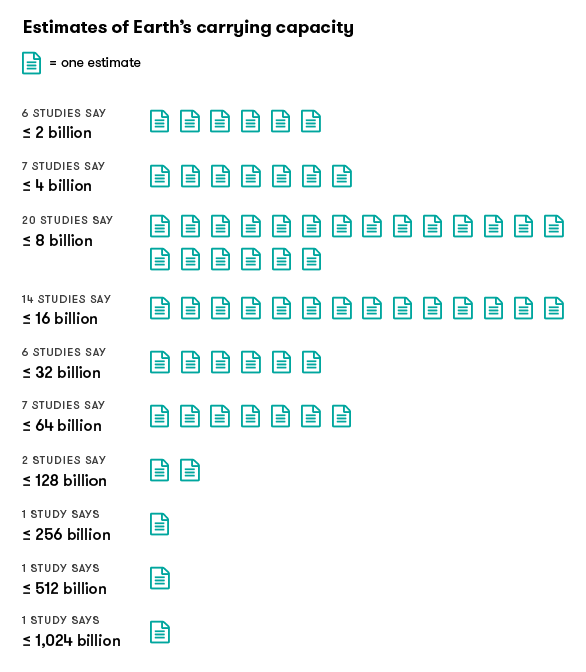How many people can Earth actually support?
It's no surprise that as the world population continues to grow, the limits of essential global resources such as potable water, fertile land, forests and fisheries are becoming more obvious. You don’t have to be a maths whizz to work out that, on the whole, more people use more resources and create more waste.
But how many people is too many? How many of us can Earth realistically support?
Influenced by the work of Thomas Malthus, 'carrying capacity' can be defined as the maximum population size an environment can sustain indefinitely.
Debate about the actual human carrying capacity of Earth dates back hundreds of years. The range of estimates is enormous, fluctuating from 500 million people to more than one trillion. Scientists disagree not only on the final number, but more importantly about the best and most accurate way of determining that number—hence the huge variability.

This is a little unsettling considering that as of September 2017, the global population sits at 7.5 billion, and is continuing to grow by around 80 million people per year.
But whether we have 500 million people or one trillion, we still have only one planet, which has a finite level of resources. Considering our population will continue to rise for some time, how do we accommodate everyone? The answer comes back to resource consumption. People around the world consume resources differently and unevenly. An average middle-class American consumes 3.3 times the subsistence level of food and almost 250 times the subsistence level of clean water. So if everyone on Earth lived like a middle class American, then the planet might have a carrying capacity of around 2 billion. However, if people only consumed what they actually needed, then the Earth could potentially support a much higher figure.
But we need to consider not just quantity but also quality—Earth might be able to theoretically support over one trillion people, but what would their quality of life be like? Would they be scraping by on the bare minimum of allocated resources, or would they have the opportunity to lead an enjoyable and full life?
Perhaps Ghandi was right when he said ‘The world has enough for everyone's need, but not enough for everyone's greed’.
Considering that people in developed, westernised countries are not only the highest consumers of all resources, but also the largest producers of waste, it might be time to take stock of our own consumption patterns, and consider what part we can play in ensuring a healthy future not only for Earth, but everyone on it.





